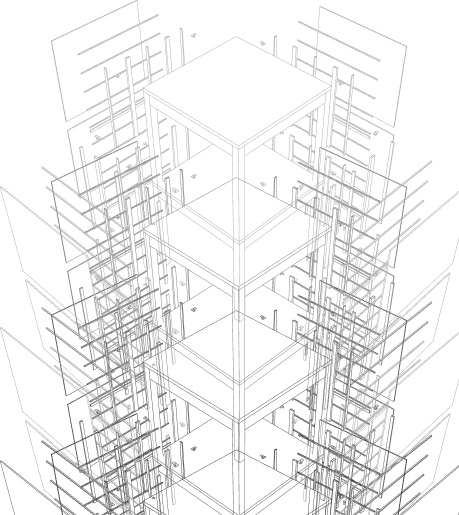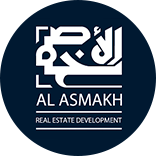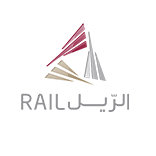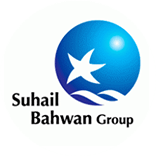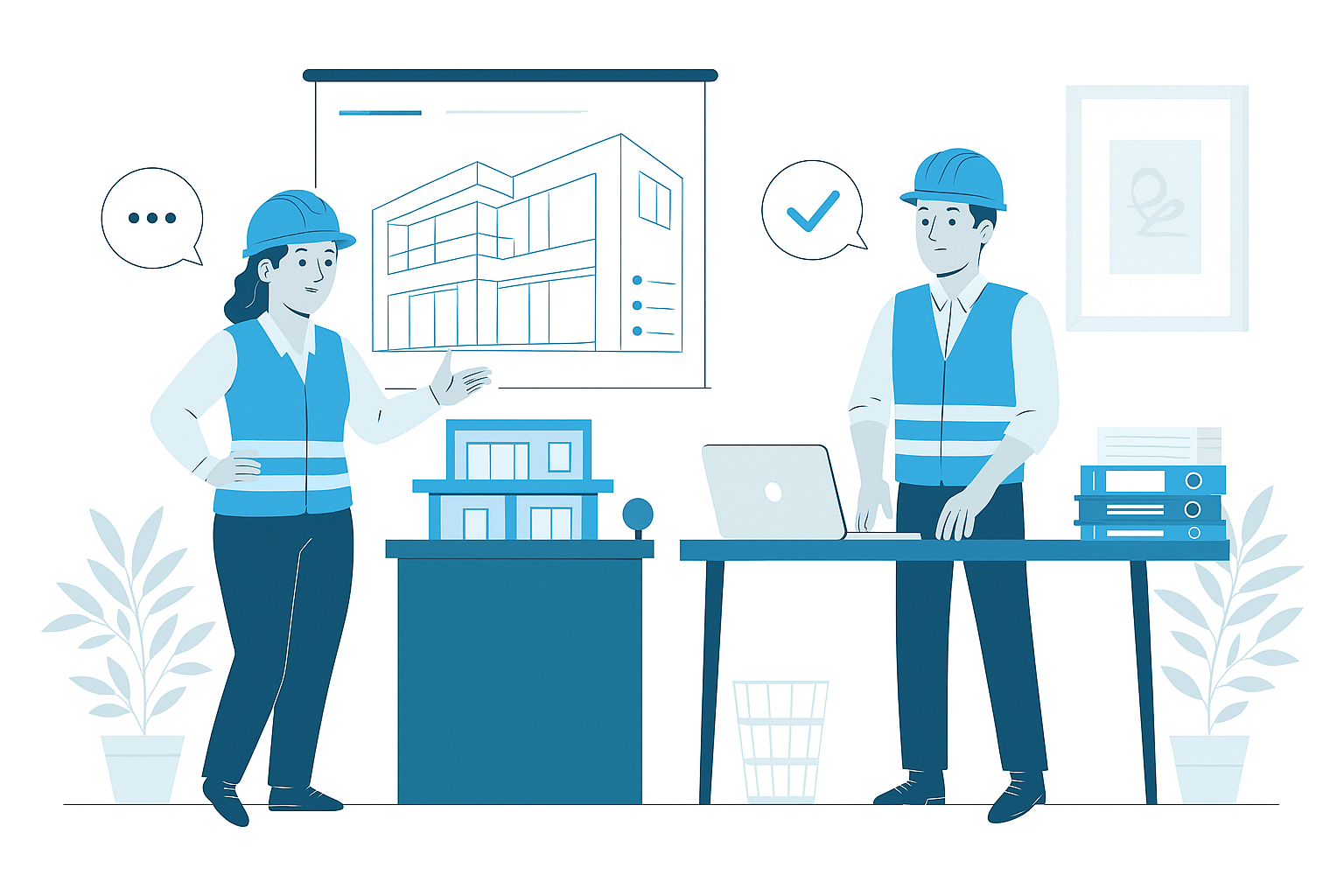Asset Management Services
In modern facility operations, BIM-based Asset Management transforms how building equipment and systems are tracked, maintained, and managed throughout their lifecycle. Our specialized services implement comprehensive digital inventories of maintainable components with detailed specifications, maintenance requirements, warranty information, and operational parameters. These intelligent systems establish direct connections between visual building models and asset databases, enabling facility teams to locate equipment precisely, access technical information instantly, plan maintenance effectively, and optimize system performance throughout the building lifecycle.
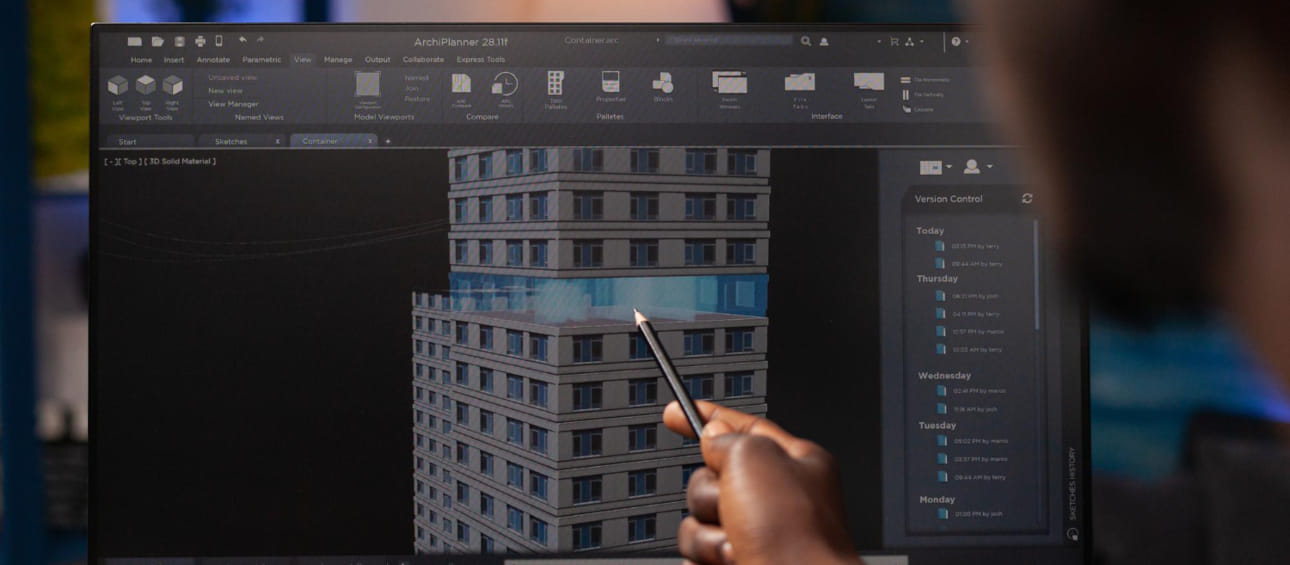
Equipment Management
- Comprehensive equipment inventories with detailed specifications and locations
- Maintenance data including service requirements, warranties, and procedures
- Visual equipment location with system relationships and access information
- Integration with CMMS and maintenance management platforms
- Complete lifecycle tracking from installation through replacement planning
Comprehensive Asset Management Solutions
Our BIM Asset Management services deliver intelligent equipment tracking and maintenance management through integrated information systems that combine visual building models with comprehensive component data. We create detailed digital inventories that document all maintainable building elements including mechanical equipment, electrical systems, plumbing components, fire protection devices, and specialized installations with complete specifications and service information. These comprehensive systems transform equipment management from isolated database records into visually navigable information resources where asset data appears within the rich spatial context of building models, enabling more intuitive access and improved operational understanding.
We implement Asset Management solutions for both new construction and existing buildings, creating effective equipment tracking systems regardless of facility age or documentation quality. For new projects, we establish information requirements during design and construction, ensuring appropriate data collection, equipment documentation, and system organization throughout building delivery. For existing facilities, we create comprehensive asset inventories through field surveys, equipment assessment, documentation review, and information integration that establish accurate digital records of installed systems. Regardless of implementation approach, our asset management systems establish sustainable information resources that support effective equipment maintenance, system optimization, and lifecycle management throughout ongoing building operations.
Strategic Benefits of BIM Asset Management
Implementing BIM Asset Management delivers substantial operational improvements that transform equipment maintenance from reactive approaches based on limited information to proactive strategies supported by comprehensive digital resources. For daily maintenance activities, enhanced equipment location, improved information access, and visual system understanding significantly reduce diagnostic time, minimize unnecessary field investigations, and support more efficient service delivery. These improvements typically increase maintenance productivity 15-25%, enabling facility teams to complete more work with existing resources while improving service response times and reducing equipment downtime.
Beyond immediate efficiency gains, BIM Asset Management provides strategic benefits that extend throughout equipment lifecycles. For system reliability, improved maintenance planning, better procedural documentation, and more effective preventive services significantly reduce equipment failures, extend useful lifespans, and improve overall operational performance. Replacement planning benefits from comprehensive inventory information, standardization opportunities, and accurate equipment histories that support more effective capital forecasting, budget optimization, and system renewal strategies. Throughout all operational dimensions, integrated asset management preserves critical equipment knowledge beyond staff transitions—creating persistent information resources that support consistent management regardless of personnel changes throughout facility operations. These combined benefits deliver exceptional return on investment through improved efficiency, reduced operational costs, and enhanced equipment performance across all building systems.
Industry Applications of Asset Management
Healthcare Facilities
Specialized Asset Management for hospitals, medical centers, and healthcare facilities with complex equipment and regulatory requirements. Our healthcare asset solutions address critical medical equipment, building systems, and infrastructure with appropriate maintenance tracking, compliance documentation, and service verification. These comprehensive systems support the demanding operational requirements of healthcare environments including continuous availability, infection control, and regulatory compliance while optimizing equipment performance and reliability.
Mission-Critical Facilities
Advanced Asset Management for data centers, telecommunications facilities, and mission-critical installations with high-reliability requirements. Our critical facility solutions document redundant systems, infrastructure components, and specialized equipment with appropriate performance monitoring and maintenance tracking. These detailed systems support the operational imperatives of critical environments including continuous uptime, failure prevention, and rapid response while ensuring maximum system reliability and performance.
Campus & Multi-Building Portfolios
Enterprise-wide Asset Management for corporate campuses, educational institutions, and multi-site portfolios requiring consistent equipment tracking across diverse facilities. Our portfolio solutions establish standardized documentation, unified maintenance approaches, and integrated information systems for distributed building inventories. These comprehensive platforms support portfolio-wide management strategies including equipment standardization, maintenance optimization, and consistent service delivery that improve operational performance across property holdings.
Manufacturing & Industrial Facilities
Specialized Asset Management for manufacturing plants, industrial facilities, and production environments with complex equipment and operational requirements. Our industrial solutions document production systems, building infrastructure, and specialized installations with appropriate maintenance parameters and performance metrics. These detailed systems support the operational demands of production environments including minimal disruption, efficient maintenance, and performance optimization while ensuring reliable equipment operation and longevity.
Why Choose Us
Advanced Asset Management That Optimizes Equipment Performance and Reliability
01
Expert Team
Certified BIM specialists with extensive experience across architectural, MEP, and facade modeling projects
02
Comprehensive Services
End-to-end BIM solutions from initial modeling to coordination, documentation, and facility management
03
Quality Assurance
Rigorous quality control processes ensuring clash-free models, accurate documentation, and seamless collaboration
04
Dedicated Support
Responsive team available to assist throughout your project lifecycle, ensuring timely solutions and continuous assistance
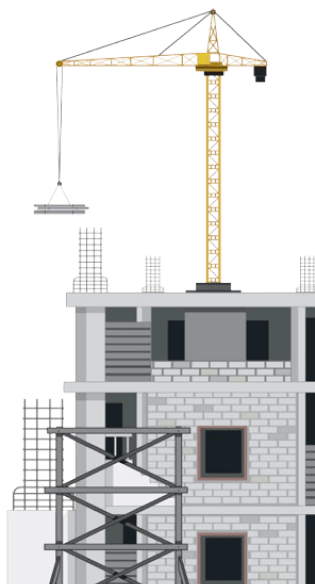
Know More
Frequently Asked Questions
BIM Asset Management is the specialized application of Building Information Modeling to track, manage, and maintain building equipment and systems throughout their lifecycle. Unlike design-focused BIM that emphasizes construction documentation, Asset Management BIM creates comprehensive digital inventories of maintainable components with detailed specifications, maintenance requirements, warranty information, and operational parameters. These intelligent models establish direct connections between visual building representations and asset databases, enabling facility teams to locate equipment precisely, access complete technical information instantly, visualize system relationships clearly, and plan maintenance activities efficiently. By transforming abstract asset records into visually navigable information resources, BIM Asset Management substantially improves maintenance efficiency, reduces equipment downtime, extends system lifespans, optimizes replacement planning, and enhances overall operational performance throughout the building lifecycle.
Our BIM Asset Management systems can document virtually any maintainable building component or equipment type across all facility systems. For mechanical systems, we track air handling units, chillers, boilers, pumps, fans, VAV boxes, terminal units, and distribution components with complete specifications and service parameters. Electrical assets include transformers, switchgear, panels, generators, UPS systems, lighting fixtures, and distribution elements with appropriate operational data. Plumbing and fire protection tracking includes pumps, backflow preventers, fixtures, valves, standpipes, fire extinguishers, and specialized components with inspection requirements. Additional systems include vertical transportation (elevators, escalators), building envelope elements (doors, windows, roof systems), telecommunications infrastructure, security systems, and specialized equipment unique to facility functions. Beyond mechanical equipment, our asset management can address furniture systems, fixed casework, floor and wall finishes, signage elements, and other non-mechanical components requiring maintenance tracking, replacement planning, or inventory management. This comprehensive approach creates complete digital inventories of all maintainable building elements regardless of system type or complexity.
Our BIM Asset Management systems incorporate extensive data attributes specifically selected to support maintenance activities and lifecycle management. Component identification includes unique asset IDs, barcode references, naming conventions, and classification codes that align with organizational systems. Technical specifications document manufacturer information, model numbers, serial numbers, date of installation, capacity ratings, and performance parameters with appropriate engineering data. Maintenance information includes service procedures, frequency requirements, warranty details, spare parts references, and technician skill requirements with appropriate documentation links. For operational planning, systems include runtime data, energy consumption, criticality ratings, and redundancy information that supports priority management. Financial attributes track purchase costs, replacement values, depreciation schedules, and maintenance expenditures for budget planning. Location data defines precise equipment positions, service access requirements, and physical relationships with related components and systems. Throughout these information sets, appropriate links to external resources including operating manuals, maintenance guides, vendor contacts, and service records create comprehensive knowledge bases for each asset. These detailed attributes transform geometric models into complete asset management platforms supporting the entire equipment lifecycle from installation through replacement.
Our BIM Asset Management implements comprehensive integration strategies that create bidirectional connections with Computerized Maintenance Management Systems (CMMS), Enterprise Asset Management (EAM) platforms, and other maintenance software. Direct integration is established through consistent asset identification systems, standardized data structures, and synchronized information hierarchies that maintain alignment between the visual BIM environment and database-driven maintenance systems. Data exchange capabilities include industry-standard COBie (Construction Operations Building Information Exchange) deliverables, custom API connections, direct database integration, or specialized middleware that enables seamless information flow between platforms. For work order management, our systems establish equipment identification protocols that enable technicians to access visual equipment locations, related component information, and system relationships directly from maintenance requests. When modifications or replacements occur, update protocols ensure that changes are reflected in both the BIM model and associated databases, maintaining consistent digital records throughout asset lifecycles. These integration capabilities transform isolated maintenance systems into visually navigable information resources where equipment data, service histories, and work orders appear within the rich spatial context of building models rather than as abstract database records.
Our BIM Asset Management implementation follows a structured methodology refined through extensive facility experience. The process begins with comprehensive requirements analysis that identifies critical assets, information needs, operational priorities, and existing systems that will shape the implementation approach. For new construction, we establish asset information requirements during design and construction phases, ensuring appropriate data collection throughout building delivery. When implementing in existing facilities, information gathering combines available documentation review, field inventory, equipment assessment, and barcode implementation to establish comprehensive asset records. The modeling phase creates the visual framework for asset management, with appropriate component development, location accuracy, and system organization. Data development follows with attribute population, information verification, and documentation integration that creates complete asset records. Integration planning establishes connections with maintenance systems, develops data exchange protocols, and ensures workflow compatibility across platforms. The deployment phase includes system testing, staff training, operational procedures, and support structures that ensure successful utilization. For ongoing management, we establish update protocols, data governance, and quality control procedures that maintain system accuracy throughout asset lifecycles. This comprehensive approach ensures BIM Asset Management delivers immediate operational value while establishing sustainable information resources for long-term facility management.
Maintaining accurate asset information throughout facility evolution requires specialized governance systems and update protocols that we establish as part of implementation. For standard maintenance activities, documentation procedures capture service records, condition assessments, and performance data within the asset management system, building comprehensive historical records for each component. When equipment replacements occur, component update workflows ensure that new installations are properly documented with accurate specifications, updated maintenance requirements, and complete operational data that maintains continuity in the asset record while reflecting the new equipment. For facility modifications, change management protocols integrate with project delivery to ensure that system alterations, additions, or removals are properly documented within the asset management framework. Throughout these processes, responsibility assignments establish clear ownership for information maintenance, approval workflows ensure data quality, and verification procedures confirm record accuracy. The governance system includes appropriate access controls, audit capabilities, and quality protocols that maintain data integrity while enabling appropriate system utilization across the organization. This comprehensive approach ensures BIM Asset Management remains an accurate, valuable resource throughout equipment lifecycles rather than degrading into outdated information that diminishes operational value.
BIM Asset Management delivers substantial and quantifiable benefits across multiple operational dimensions that significantly improve facility performance. For maintenance operations, organizations typically experience 15-25% efficiency improvements through enhanced equipment location, reduced diagnostic time, improved information access, and streamlined workflows that optimize technician productivity. Equipment downtime typically decreases 20-30% through better preventive maintenance, improved troubleshooting, faster parts identification, and more effective repair procedures enabled by comprehensive asset information. System lifespan generally increases 10-15% through optimized maintenance scheduling, appropriate service procedures, and performance monitoring that extends equipment durability. For replacement planning, organizations typically save 10-20% on procurement costs through standardization opportunities, accurate specification development, and optimized purchasing strategies based on comprehensive inventory understanding. Additional benefits include reduced energy consumption through better system management, decreased business disruption through improved maintenance planning, and enhanced regulatory compliance through better inspection documentation. When properly implemented with appropriate organizational adoption, these combined benefits typically deliver ROI between 200-400% over a three-year period depending on facility type, equipment complexity, and previous management sophistication, representing exceptional return on the investment in asset information systems.
While BIM Asset Management provides value for virtually all facilities, certain building types and organizations realize exceptional benefits from implementation. Equipment-intensive facilities including hospitals, manufacturing plants, laboratories, and data centers gain tremendous value through comprehensive documentation of complex mechanical systems, critical equipment, and sophisticated infrastructure that require rigorous maintenance management. Facilities with continuous operation requirements including healthcare environments, mission-critical installations, and 24/7 operations benefit significantly from improved maintenance planning, reduced system failures, and optimized repair processes that minimize operational disruptions. Organizations with large facility portfolios including corporate campuses, university systems, government complexes, and property management firms leverage standardized asset management approaches, consistent maintenance strategies, and enterprise-wide data integration that optimize operations across multiple buildings. Facilities with regulatory compliance requirements including healthcare, pharmaceutical, food processing, and specialized manufacturing gain significant documentation benefits through improved inspection records, maintenance verification, and compliance tracking. For these facility types and owner profiles, BIM Asset Management represents a transformative approach to equipment maintenance and lifecycle management that delivers substantial operational improvements, cost savings, and risk reduction throughout building operations.
Wide Range of SERVICES
Other Facility Management
Discover our facility management BIM services that support efficient building operations, maintenance planning, and asset management throughout the lifecycle of your property.
Create detailed BIM models specifically optimized for facility management applications, supporting operations and maintenance throughout the building lifecycle.

Utilize BIM for effective space management, planning, and utilization analysis to optimize facility usage and support organizational needs.


